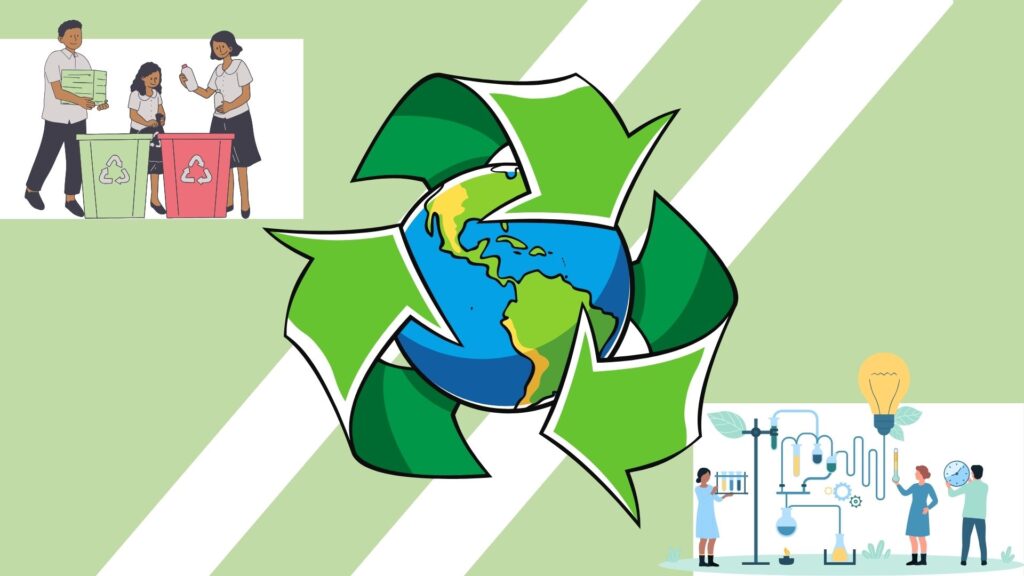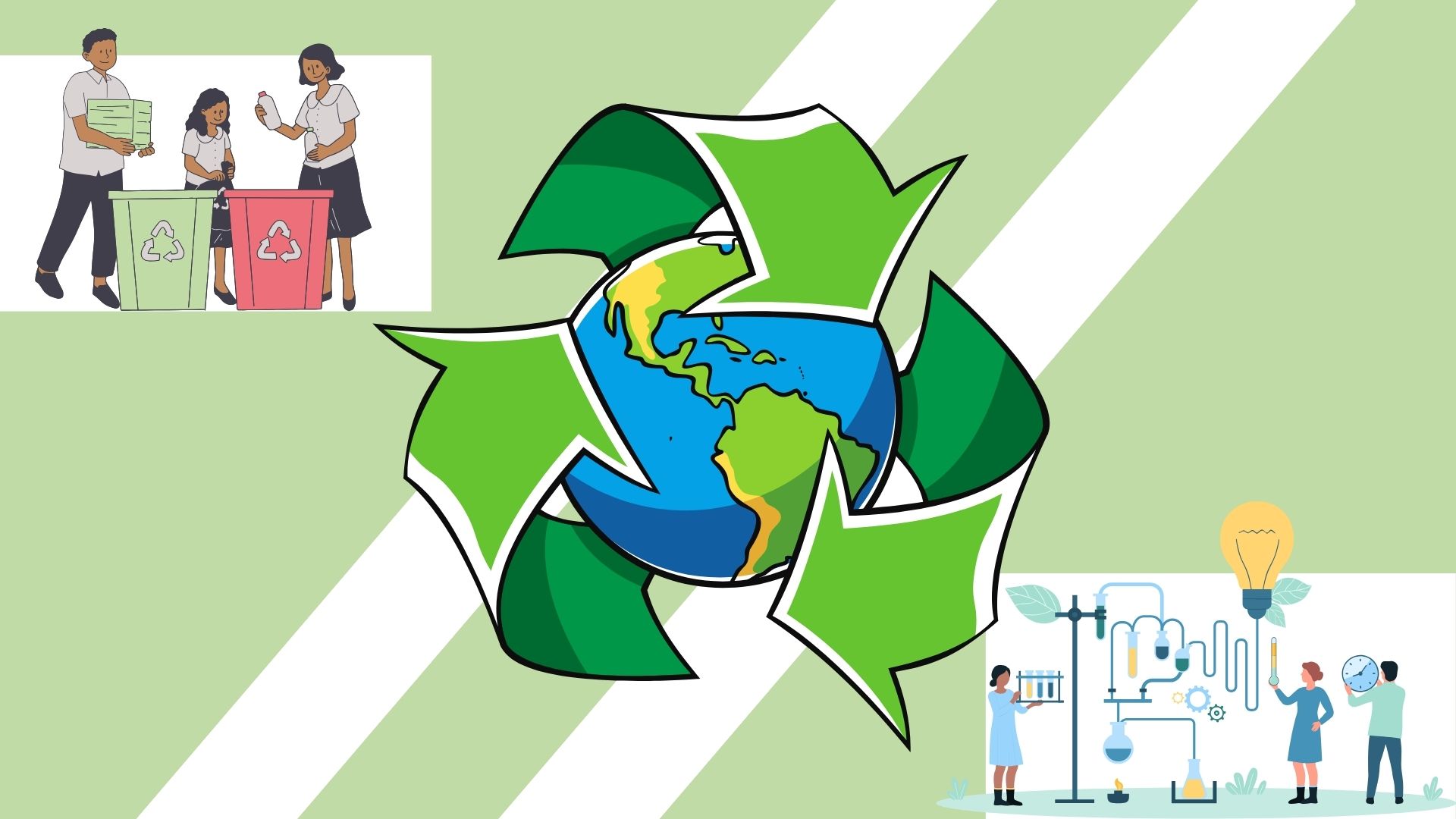Recycling Innovations

Recycling is an important part of taking care of our planet. New innovations are making it easier. Many people don’t know about recent advances in recycling technology. For example, some companies are now using robots to sort waste. These robots can work faster and more accurately than humans. They can separate different types of materials, like plastic, glass, and metal.
Another innovation is the use of chemical recycling. Traditional recycling methods often cannot handle mixed or dirty plastics. Chemical recycling breaks down plastics into their basic parts. This can then be used to make new products. It helps to recycle materials that were previously considered non-recyclable.
Furthermore, there are new ways to recycle food waste. Some places are turning food scraps into energy. This process is called anaerobic digestion. It involves breaking down food waste in a sealed tank, producing biogas. Biogas can be used for electricity, heating, or fueling vehicles. This method helps reduce the amount of waste going to landfills.
Innovations in recycling are not limited to just technology. Many communities are also improving their recycling programs. They are educating people about recycling and providing better facilities. This makes it easier for everyone to participate. By supporting these innovations, we can help reduce waste and protect our environment.
In conclusion, recycling innovations are making a big difference. They improve efficiency and make it easier to recycle more types of materials. These advancements prove that with creativity and effort, we can find better ways to recycle.
Text Analysis
General Level: B1.6
Vocabulary: B1.7
Verb Form: B1.2
Clause: A2.6
Phrases and Idioms
Lemma | Count | Sentences |
make it (something) | 3 | · New innovations are making it easier. · This makes it easier for everyone to participate. · They improve efficiency and make it easier to recycle more types of materials. |
break down | 2 | · Chemical recycling breaks down plastics into their basic parts. · It involves breaking down food waste in a sealed tank, producing biogas. |
anaerobic digestion | 1 | · This process is called anaerobic digestion. |
go to (someone or something) | 1 | · This method helps reduce the amount of waste going to landfills. |
know about (someone or something) | 1 | · Many people don’t know about recent advances in recycling technology. |
limit to | 1 | · Innovations in recycling are not limited to just technology. |
take care of (someone or something) | 1 | · Recycling is an important part of taking care of our planet. |
Reading Comprehension Exercises
True / False / Not Given
- Recycling robots are capable of differentiating between organic and inorganic materials.
- Newer recycling robots perform better than humans in sorting various materials.
- Chemical recycling can recycle plastics that are difficult for traditional recycling methods.
- Anaerobic digestion of food waste does not contribute to electricity production.
- Anaerobic digestion involves breaking down food waste in an open container.
- Community education is part of the effort to improve recycling programs.
- Communities are moving away from recycling programs due to the complexity of new technologies.
- Using biogas from food waste for vehicle fuel is the most common application of anaerobic digestion.
- Chemical recycling has been more expensive than traditional recycling methods.
- Innovations in recycling technology show that creativity and effort can lead to better recycling methods.
It's Your Turn!
Create your multiple choice questions for this reading lesson just in seconds!
Step 1: Click the button to copy the reading text
Step 2: Go to
Step 3: Paste the reading text
Select question type (Multiple Choice)
Click “Create” and your questions will be ready in seconds!
Short Answer Questions
- How are some companies using robots in recycling?
- What advantage do robots have over humans in sorting waste?
- What is the purpose of chemical recycling?
- What does anaerobic digestion produce from food waste?
- What are some uses of biogas generated from food waste?
- How are communities helping to improve recycling programs?
- What impact do new innovations in recycling have?
- What is an example of a new way to recycle food waste?
- Why is chemical recycling considered beneficial?
- What does the conclusion suggest about recycling innovations?
Writing Exercise
Writing Exercise
Q. Write a paragraph about the importance of recycling and how it can help the environment.
Answer Key
True / False / Not Given Answers
- Answer: Not Given
Explanation: The text mentions robots sorting waste, but does not specify if they can differentiate between organic and inorganic materials.
Answer location: “N/A”
- Answer: True
Explanation: The text states that the robots are faster and more accurate than humans in waste sorting.
Answer location: “These robots can work faster and more accurately than humans.”
- Answer: True
Explanation: The text explains that chemical recycling can handle mixed or dirty plastics that traditional methods cannot.
Answer location: “Chemical recycling breaks down plastics into their basic parts. This can then be used to make new products. It helps to recycle materials that were previously considered non-recyclable.”
- Answer: False
Explanation: The text mentions that biogas produced from anaerobic digestion can be used for electricity.
Answer location: “It involves breaking down food waste in a sealed tank, producing biogas. Biogas can be used for electricity, heating, or fueling vehicles.”
- Answer: False
Explanation: The text specifies that food waste is broken down in a sealed tank, not an open container.
Answer location: “It involves breaking down food waste in a sealed tank, producing biogas.”
- Answer: True
Explanation: The text indicates that communities are educating people as part of their improved recycling programs.
Answer location: “Many communities are also improving their recycling programs. They are educating people about recycling and providing better facilities.”
- Answer: Not Given
Explanation: The text does not discuss communities moving away from recycling programs, but rather talks about their efforts to improve them.
Answer location: “N/A”
- Answer: Not Given
Explanation: The text indicates that biogas can be used for various purposes, but does not specify which is the most common.
Answer location: “N/A”
- Answer: Not Given
Explanation: The text does not provide information about the cost comparison between chemical and traditional recycling methods.
Answer location: “N/A”
- Answer: True
Explanation: The text concludes that creativity and effort have led to significant improvements in recycling methods.
Answer location: “These advancements prove that with creativity and effort, we can find better ways to recycle.”
It's Your Turn!
Create your multiple choice questions for this reading lesson just in seconds!
Step 1: Click the button to copy the reading text
Step 2: Go to
Step 3: Paste the reading text
Select question type (Multiple Choice)
Click “Create” and your questions will be ready in seconds!
Short Answer Answers
- Answer: To sort waste.
Explanation: The text describes that companies are using robots to sort waste faster and more accurately than humans.
Answer location: “For example, some companies are now using robots to sort waste.”
- Answer: Work faster and more accurately.
Explanation: The text highlights that robots can perform the task of sorting waste quicker and with higher accuracy than human labor.
Answer location: “These robots can work faster and more accurately than humans.”
- Answer: To handle mixed or dirty plastics.
Explanation: The text explains that chemical recycling is used to break down mixed or dirty plastics, making them suitable for recycling.
Answer location: “Traditional recycling methods often cannot handle mixed or dirty plastics. Chemical recycling breaks down plastics into their basic parts.”
- Answer: Biogas.
Explanation: The text states that anaerobic digestion is a process that breaks down food waste to produce biogas.
Answer location: “This process is called anaerobic digestion. It involves breaking down food waste in a sealed tank, producing biogas.”
- Answer: Electricity, heating, or fueling vehicles.
Explanation: The text mentions the various applications of biogas, including electricity generation, heating, and as a vehicle fuel.
Answer location: “Biogas can be used for electricity, heating, or fueling vehicles.”
- Answer: Educating people and providing better facilities.
Explanation: The text explains that communities are enhancing recycling programs by educating people and offering better recycling facilities.
Answer location: “They are educating people about recycling and providing better facilities.”
- Answer: Improve efficiency and make it easier to recycle more types of materials.
Explanation: The text states that new recycling innovations increase efficiency and expand the range of materials that can be recycled.
Answer location: “They improve efficiency and make it easier to recycle more types of materials.”
- Answer: Turning food scraps into energy.
Explanation: The text provides an example of energy production from food scraps as a new method of recycling food waste.
Answer location: “Furthermore, there are new ways to recycle food waste. Some places are turning food scraps into energy.”
- Answer: Recycles materials previously non-recyclable.
Explanation: The text notes that chemical recycling helps to recycle materials that were otherwise deemed non-recyclable.
Answer location: “This can then be used to make new products. It helps to recycle materials that were previously considered non-recyclable.”
- Answer: With creativity and effort, we can find better ways to recycle.
Explanation: The text concludes by suggesting that innovative efforts can result in improved recycling methods.
Answer location: “These advancements prove that with creativity and effort, we can find better ways to recycle.”
Your Own Reading Lesson
Create Your Own Lesson with Cathoven AI
You can create your own reading lesson based on your interests or those of your students!
Go to;
Type the topic you are interested in, select the level and genre you are looking for, and click Generate!
Paste the reading text you generated and get a detailed analysis of your text.
Select the type of exercise, paste the reading text, and click Create!
Your reading lesson is ready!




